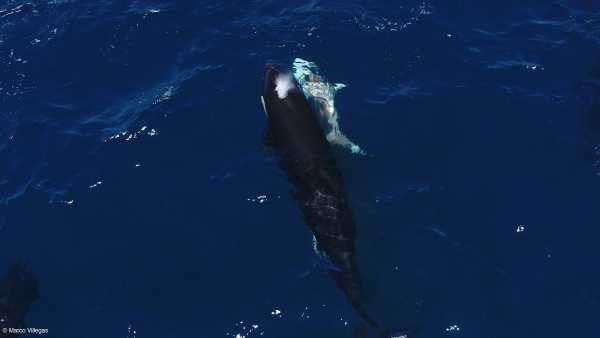
Two Ice Age puppies have been discovered near Tumat, Siberia. (Photo courtesy of the University of York)
A pair of 14,000-year-old 'puppies' found in melting permafrost in Siberia have undergone genetic analysis, revealing they were wolf sisters and not domesticated dogs as previously thought.
“While many may be disappointed that these creatures are likely wolves rather than early domesticated dogs, they have helped us better understand the environment of the time, the lifestyle of these animals and how close the wolves that existed more than 14,000 years ago are to modern wolves,” said Anne Katrin Runge, an archaeologist at the University of York in the UK.
Runge led an international team of scientists who analyzed the puppies' bones and DNA. Their study, published Thursday (June 12) in the journal Quaternary Research, found that the mummified “pups” were littermates of wolves that died between 14,100 and 15,000 years ago.
You might be interested
- 'Unusual' Woolly Mammoth Tooth, Oldest Ever Found in North America
- 130,000-year-old baby mammoth goes under the knife
- Colossal Biosciences Says Adorable Dire Wolf Cubs Are 'World's First De-Extinction of an Extinct Species'
The remarkably preserved and mummified remains were discovered in 2011 and 2015 near the village of Tumat in the far north of Siberia. In addition to the two tusks, scientists found the bones of a woolly mammoth (Mammuthus primigenius) that appeared to have been cut up and burned by humans. These archaeological finds suggest that the tusks may have belonged to very early domesticated dogs that foraged for food from humans — such as the chunk of woolly rhinoceros meat found in the belly of one of the animals.
Dogs and wolves are closely related genetically, but they diverged between 20,000 and 40,000 years ago. Humans then domesticated wild dogs around 15,000 years ago. However, the title of the world's oldest domesticated dog has never been firmly established. One possible candidate is the Bonn-Oberkassel dog, found in Germany in a human burial dating back 14,200 years.
Because they were older, the Ice Age Tumat dogs were previously thought to be among the oldest domesticated dogs in the world. However, DNA tests conducted in 2019 showed that they were most likely members of a now-extinct wolf population unrelated to modern dogs.
In the new study, Runge and colleagues built on the 2019 data by examining genetic information from the animals' gut contents and studying chemical “fingerprints” in their bones, teeth and tissue to reveal more about the famous cubs.
The pups were genetically identified as sisters – they died at just a few months old, but both ate solid food, including woolly rhinoceros (Coelodonta antiquitatis) and a small bird known as a wagtail – but not mammoth, which may indicate that Ice Age humans fed them scraps of food. The researchers also found that both sisters are still alive
Sourse: www.livescience.com





